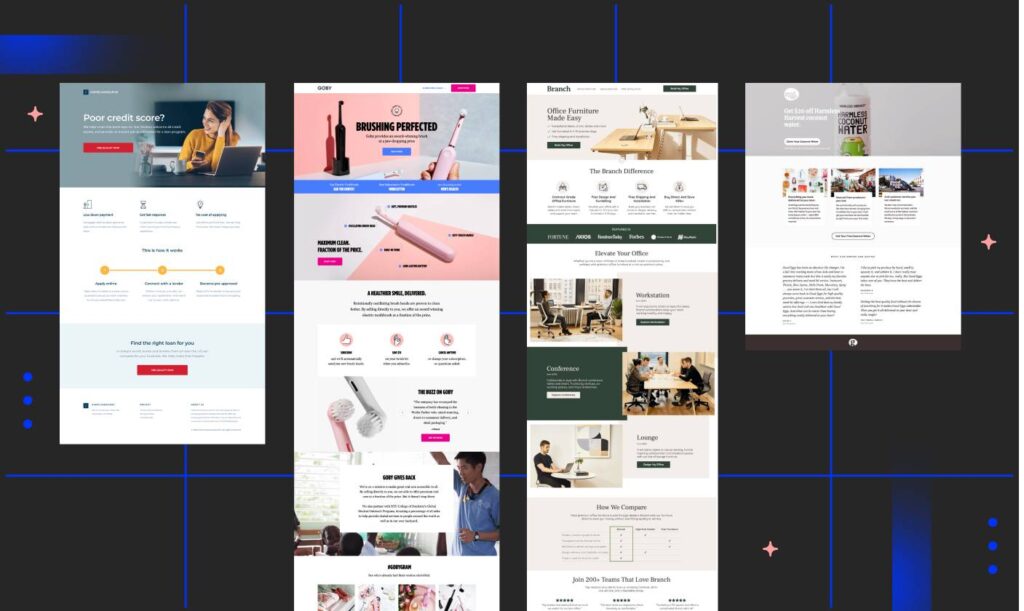Designing a website isn’t just about creating an appealing look; it’s also about ensuring that your site performs well in search engines. When you aim to build a website design with SEO in mind, you’re setting yourself up for better visibility and engagement. This guide will walk you through 11 essential strategies to integrate SEO into your website design, helping you create a site that stands out in search results and meets user needs.
1. Ensure Mobile Responsiveness
Why Mobile Responsiveness is Essential
With the majority of users accessing websites via mobile devices, having a mobile-friendly design is crucial. Google prioritizes mobile-first indexing, which means your site’s mobile version is considered for rankings before the desktop version.
How to Achieve Mobile Responsiveness
- Adopt a Responsive Design: Use a design that adjusts smoothly to different screen sizes.
- Test Across Devices: Ensure your site performs well on various mobile devices using tools like Google’s Mobile-Friendly Test.
2. Improve Page Load Speed
The Impact of Load Speed
A website that loads quickly is crucial for a positive user experience and strong SEO performance. Pages that take too long to load can lead to high bounce rates and lower rankings.
Tips for Speed Optimization
- Image Optimization: Resize and compress images to reduce file size without losing quality.
- Reduce HTTP Requests: Simplify your page design to minimize the number of elements that need to load.
- Enable Caching: Use browser caching to improve repeat visits.
3. Create SEO-Friendly URLs
The Importance of URL Structure
Clear, concise URLs help search engines understand your content better and improve your website’s visibility in search results.
Best Practices for URLs
- Include Relevant Keywords: Make sure your URLs reflect the content and include important keywords.
- Keep It Simple: Use short and descriptive URLs that are easy to read.
4. Incorporate Relevant Keywords
Role of Keywords in SEO
Effective use of keywords in your content helps search engines understand what your pages are about and improves your site’s ranking.
How to Use Keywords Effectively
- Conduct Keyword Research: Find relevant keywords using tools like Google Keyword Planner.
- Integrate Keywords Naturally: Place keywords in a way that flows naturally within your content to avoid keyword stuffing.
5. Enhance User Experience (UX)
Why UX is Crucial
A positive user experience keeps visitors on your site longer and encourages them to engage with your content, which can positively impact your SEO.
Improving UX
- Simplify Navigation: Make it easy for users to find information with intuitive menus and clear links.
- Create Clear Calls to Action: Ensure your CTAs are straightforward and encourage user interaction.
- Opt for Readable Typography: Choose fonts and text sizes that are easy to read and visually appealing.
6. Optimize On-Page Elements
Key On-Page SEO Factors
On-page elements are crucial for helping search engines interpret your content and improving your overall SEO.
Essential On-Page Elements
- Title Tags: Include relevant keywords and keep titles concise, ideally under 60 characters.
- Meta Descriptions: Write compelling descriptions with keywords that encourage users to click through to your site.
- Header Tags: Use H1, H2, and H3 tags to structure your content and incorporate relevant keywords.
7. Utilize Internal and External Links
Importance of Linking
Both internal and external links help search engines understand the context of your content and provide additional resources to your audience.
Linking Strategies
- Internal Links: Connect to other relevant pages on your site to keep visitors engaged and improve site navigation.
- External Links: Link to reputable sources to add credibility and provide more context.
8. Implement Schema Markup
What is Schema Markup?
Schema markup is a type of structured data that helps search engines understand your content better and can enhance your search visibility.
Using Schema Markup
- Add Relevant Markup: Implement schema types that fit your content, such as product information or reviews.
- Use Structured Data Tools: Utilize tools like Google’s Structured Data Markup Helper to add schema to your pages.
9. Optimize Images for SEO
Why Image Optimization Matters
Images contribute to your site’s load time and SEO. Proper optimization ensures they don’t negatively affect your site’s performance and helps with search visibility.
Image Optimization Tips
- Use Descriptive Alt Text: Include relevant keywords in image descriptions to improve SEO.
- Choose Appropriate Formats: Use JPEGs for photos and PNGs for graphics.
- Optimize Images: Shrink image file sizes to speed up your site’s loading time..
10. Build Quality Backlinks
Role of Backlinks in SEO
Gaining backlinks from reputable sites can enhance your site’s authority and improve its search engine rankings.
Strategies for Earning Backlinks
- Guest Blogging: Write articles for other sites to earn valuable backlinks.
- Collaborate with Influencers: Partner with influencers to gain high-quality links.
- Create Valuable Content: Develop content that is shareable and likely to attract backlinks from other sites.
11. Regularly Update Your Website
Importance of Regular Updates
Keeping your website content fresh and updated is important for maintaining SEO performance and user engagement.
Maintenance Tips
- Monitor Site Performance: Use analytics tools to track how your site is performing and identify areas for improvement.
- Refresh Content: Regularly update your content to keep it relevant and engaging.
FAQs About Website Design with SEO
Q: Why is mobile responsiveness important for SEO?
A: Mobile responsiveness is crucial because Google uses mobile-first indexing. A mobile-friendly site ensures better rankings and a better user experience on mobile devices.
Q: How can I speed up my website?
A: To improve website speed, compress images, minimize HTTP requests, and enable browser caching. Tools like Google PageSpeed Insights can offer specific recommendations.
Q: What should be included in an SEO-friendly URL?
A: An SEO-friendly URL should be short, descriptive, and include relevant keywords. Avoid long and complex URLs to improve readability and search visibility.
Q: How often should I update my website content?
A: Regular updates are important for maintaining SEO performance. Aim to review and refresh your content every few months to keep it current and relevant.
Q: What is schema markup and how does it help SEO?
A: Schema markup is structured data that helps search engines understand your content better, potentially enhancing search visibility with additional information in search results.
Conclusion
Designing a website with effective SEO requires a comprehensive approach that integrates design principles with search engine optimization strategies. By focusing on mobile responsiveness, page speed, keyword optimization, and other key factors, you can create a website design with SEO that performs well and attracts more visitors. Implement these 11 strategies to ensure your site not only looks great but also ranks high in search results, driving more traffic and engagement.







